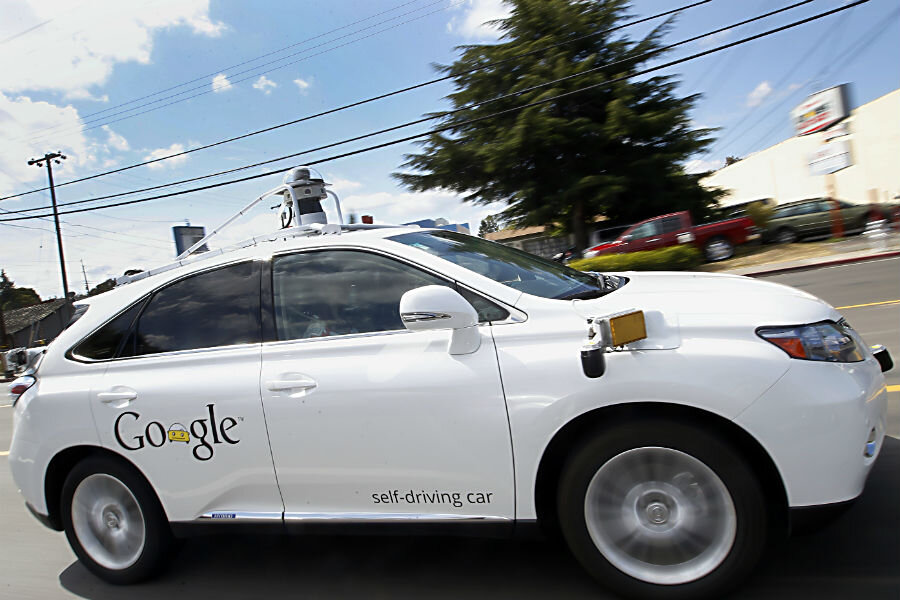Is Google at fault for its self-driving car crash?
Loading...
Google said it would take “some responsibility” for a minor collision in February involving one of its driverless cars and a municipal bus.
Although Google’s autonomous vehicles have been involved at least 17 collisions, none of them serious, in its six years of testing on public roads, other drivers were at fault for all but one. And that case involved a Google employee who was in control of the car at the time of the incident.
“Not once was the self-driving car the cause of the accident,” Google said in May. At that time, the driverless cars had traveled safely for more than 1.8 million miles.
The collision that marked the Google cars’ first misstep occurred on Feb. 14 in Mountain View, Calif., near Google headquarters. The car, a Lexus RX450h, attempted to turn in the right lane at an intersection when it found its route blocked by sandbags around a storm drain. The vehicle then had to re-enter the center lane in order to make the turn, which it did without recognizing that a public transit bus was already driving in that lane. The car collided with the side of the moving bus, damaging the Google car’s left front fender, wheel, and sensor.
No one was injured, according to the official accident report filed by Google. The Google car was traveling less than 2 miles per hour, while the bus driving down the center lane was moving at 15 mph.
Google accepted the blame, but said that the collision could have been prevented by the car’s test driver.
“We clearly bear some responsibility, because if our car hadn’t moved, there wouldn’t have been a collision,” Google said Monday, reported Reuters. “That said, our test driver believed the bus was going to slow or stop to allow us to merge into the traffic, and that there would be sufficient space to do that.”
A spokeswoman for the Santa Clara Valley Transportation Authority said it will investigate the February incident to determine liability.
The non-profit consumer interest group Consumer Watchdog, long a critic of Google’s driverless car program, seized on the incident.
“This accident is more proof that robot car technology is not ready for auto pilot, and a human driver needs to be able to takeover when something goes wrong,” said John M. Simpson, the group’s consumer advocate, in a statement. “Google’s one-paragraph account of what caused it to drive into a bus is not good enough to inform new rules of the road for robot cars.”
Google announced in January that between September 2014 and November 2015, test drivers in its cars had to take control of the vehicles on 341 occasions. While 272 of those times were due to technical glitches, the remaining 69 were based on drivers' decisions to avoid potential collisions.
In response to the crash, Google has said it made modifications to its cars’ programming after running simulations based on “thousands” of variations of last month’s collision.
“From now on, our cars will more deeply understand that buses (and other large vehicles) are less likely to yield to us than other types of vehicles, and we hope to handle situations like this more gracefully in the future,” Google said.






